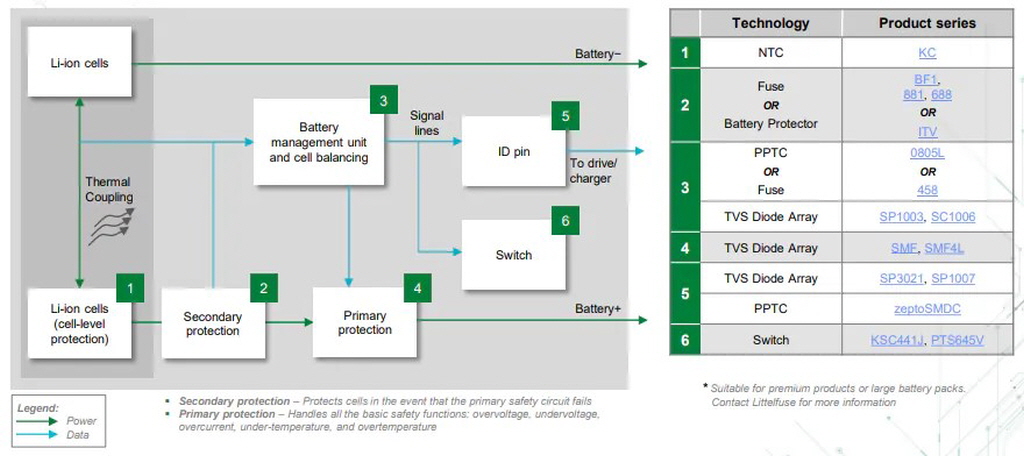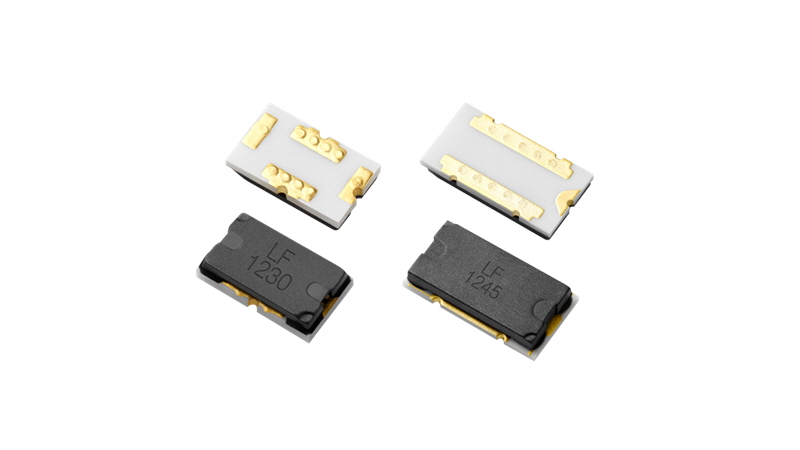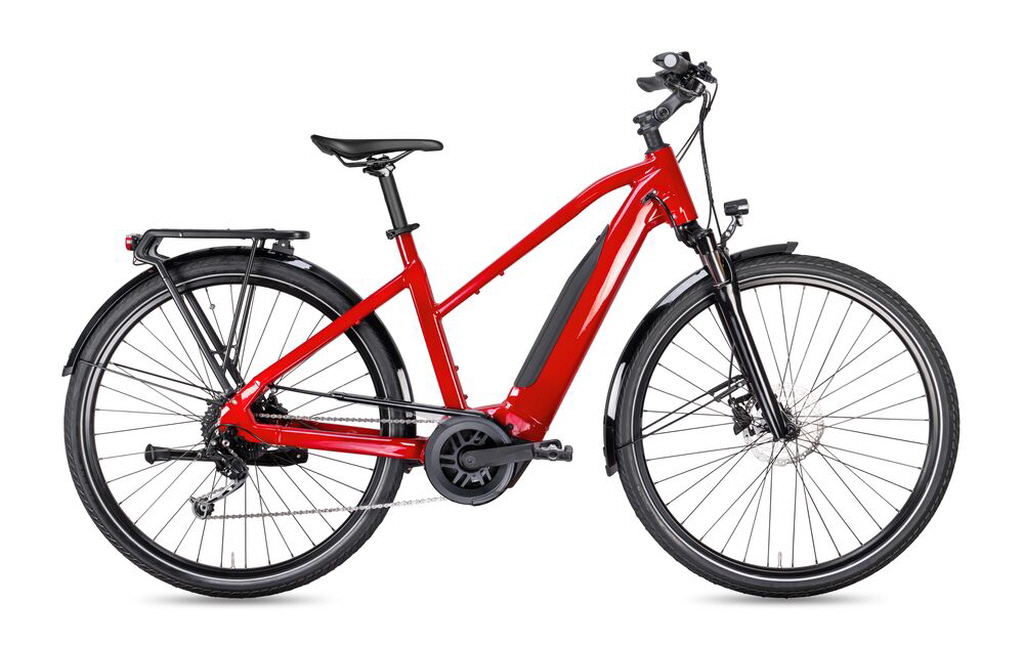컨슈머 시장의 개인용 마이크로모빌리티 솔루션의 종류, 당면한 기술적 과제, 기술을 이용한 문제 해결, 배터리 화재 문제 등 개인 교통 수단과 소비자들을 위한 해결 과제에 관해 마우저 일렉트로닉스(Mouser Electronics) 마크 패트릭(Mark Patrick)이 이야기한다.
“‘마이크로모빌리티’ 배터리 안전 없이 운행 불가”
서미스터 사용 개별 셀 온도 모니터링, 열 폭주 전 MCU가 조치
ITV 배터리 보호 디바이스, IC나 FET 과전압 감지 때 회로 차단
[편집자 주]총 4부로 이루어진 마이크로모빌리티 시리즈 3부에서는 컨슈머 시장의 개인용 마이크로모빌리티 솔루션 종류, 당면한 기술적 과제, 기술을 이용한 문제 해결, 배터리 화재 문제 등 개인 교통 수단과 소비자들을 위한 해결 과제에 관해서 알아본다.
[기고순서]
1부: 마이크로모빌리티에 대하여
2부: 도시 인프라와 마이크로모빌리티
3부: 개인 교통 수단과 소비자들을 위한 해결 과제
4부: 미래에 마이크로모빌리티는 어떤 모습일까?
.jpg)
▲출처: Maryana/stock.adobe.com
개인용 마이크로모빌리티 솔루션은 전기 자전거와 전기 스쿠터에서부터 전기 스케이트보드와 호버보드에 이를 만큼 형태와 크기가 다양하다. 어떤 이들은 걷기나 운전을 대신하는 교통 수단으로 이용할 수도 있고, 또 어떤 이들은 운동 장비로 이용할 수도 있을 것이다.
그 중에서도 전기 자전거는 가장 주요한 마이크로모빌리티 솔루션이다. 시장 조사 회사인 Precedence Research에 따르면, 전기 자전거 시장이 2023년에서 2032년에 이르면서 9.89퍼센트의 연 평균 성장률(CAGR)로 성장하고 시장 규모는 440억8천만 달러에 이를 것이라고 한다.
초기의 전기 자전거는 무거운 배터리와 허브 모터를 부착한 형태의 자전거였는데, 오늘날 전기 자전거는 훨씬 더 경량이고 애초부터 전기 구동 시스템과 배터리를 수용하도록 설계됐다. 배선을 조심스럽게 프레임 속의 관을 통과하도록 함으로써 손상을 방지한다. 중급형 및 그 이상의 모델에는 페달들 사이에 미드 드라이브 모터 유닛을 장착함으로써 드라이브트레인의 효율과 무게 분포를 최적화한다(그림 1).
▲그림 1 : 오늘날 도시형 전기 자전거는 미드 드라이브 모터와 내장형 배터리를 특징으로 한다.(출처: stockphoto-graf/stock.adobe.com)
○ 그 밖의 마이크로모빌리티
전기 자전거 외에도 호버보드, 세그웨이, 전기 스케이트보드, 전기 스쿠터 같은 다양한 마이크로모빌리티 솔루션이 존재한다. 이러한 것들을 소유하는 것은 합법적이지만, 영국과 대부분 EU 지역에서 이러한 것들을 사용하는 것은 사유지로만 한정된다. 보도, 도로, 자전거 도로 같은 공공 구역으로 들어가는 것은 금지하고 있기 때문이다.
전자 설계의 관점에서 이들 제품은 전기 자전거와 마찬가지로 모터, 제어 인터페이스, 배터리 팩을 탑재하고 있다. 전기 자전거와의 차이점은 움직임을 제어하는 것에 있다. 이들 솔루션은 스로틀을 통해서 혹은 호버보드와 세그웨이 같은 경우에는 자이로스코픽 센서를 통해서 전적으로 전기 파워트레인에 의존해서 사용자가 조작을 하고 속도를 제어한다.
■ 개인용 마이크로모빌리티의 과제
개인용 마이크로모빌리티 솔루션이 지난 몇 십년 사이에 놀랄 만큼 빠르게 성장해 왔고 앞으로도 계속 그럴 것으로 보이는데, 해결해야 할 과제들 또한 없지 않다. 규제 측면의 문제들을 해결해야 할 뿐만 아니라, 현재 나와 있는 개인용 마이크로모빌리티 솔루션들로 여전히 해결해야 할 기술적 과제들을 안고 있다.
○ 배터리 화재
가장 큰 문제는 개별 셀 또는 배터리 관리 시스템(BMS) 결함으로 인한 배터리 화재이다. 런던 소방청에 따르면, 2022년에 전기 자전거 및 전기 스쿠터 배터리로 인한 화재가 116건이었으며 이 발생 건수는 점점 늘어나고 있다. 2023년을 시작하면서는 전기 자전거 및 전기 스쿠터 배터리 화재와 관련한 신고 건수가 평균적으로 하루 걸러 한 번 꼴로 발생하고 있다. 이처럼 화재 건수가 증가함에 따라서 런던 교통국(TfL)은 2021년부터 전기 스쿠터, 호버보드, 스케이트보드와 관련한 서비스들을 금지시켰다.
최근의 마이크로모빌리티 배터리는 리튬이온 18650 셀들을 어레이로 연결해서 필요한 전하 용량과 전압(통상적으로 36V, 48V, 52V)을 제공한다. 리튬이온 셀에 사용되는 전해액은 리튬염(lithium salt)이다. 리튬염이 이 애플리케이션에 이상적이기는 하나, 리튬염은 휘발성이고 가연성이다. 그러므로 리튬 셀은 온도 변화에 극히 민감하며 열 폭주를 일으킬 수 있다.
셀이 손상, 제조 결함, 외부적 열, 과충전/과방전 등으로 인해서 어떻게든 훼손되면 온도가 급격하게 상승함으로써 불이 나거나 폭발을 일으킬 수 있다. 그러면 배터리 팩의 나머지 셀들로 불이 붙고 폭주 현상이 일어날 수 있다. 더군다나 리튬이온 배터리의 양극(cathode)은 산소를 포함하므로 어떤 불이든 자체적으로 연료를 공급함으로써 진화하기가 아주 어려울 수 있다.
■ 안전 향상
마이크로모빌리티 화재는 꽤 빈번히 발생되고 있는데 대개가 로우엔드 제품이다. 중급 및 프리미엄급 제조사들은 화재가 발생되는 것이 거의 드물다.
○ 안전한 배터리 설계
비용 절감 차원에서 로우엔드 배터리는 대체로 셀 충전과 방전 밸런싱만 하는 간단한 BMS를 사용하고 충전 라인과 출력 아웃릿으로 퓨즈를 사용한다.
이와 비교해서 하이엔드 모델은 Littelfuse가 제안하는 것과 같이 훨씬 더 정교한 안전 조치들을 포함한다. Littelfuse는 전기 자전거 및 여타 마이크로모빌리티 용으로 다양한 솔루션들을 제공한다(그림 2).

▲그림 2 : Littelfuse의 전기 자전거 배터리 팩 블록 다이어그램(출처 : Mouser Electronics)
이 배터리 블록 다이어그램은 Littelfuse KC 시리즈 같은 NTC(negative temperature coefficient) 서미스터를 제안하고 있다. 이 서미스터를 사용해서 개별 셀들의 온도를 모니터링할 수 있다. 그러므로 열 폭주가 발생되기 전에 마이크로컨트롤러가 조치를 취할 수 있다.
여기에다 컴팩트한 표면실장 0805L 시리즈 PPTC(polymeric positive temperature coefficient) 디바이스 같은 배터리 차원 과전류 및 과전압 보호 디바이스를 함께 사용할 수 있으며, Littelfuse ITV 배터리 보호 디바이스를 사용해서 추가적인 보호를 제공할 수 있다(그림 3).

▲그림 3 : Littelfuse의 ITV 배터리 보호 디바이스(출처: Mouser Electronics)
셀들의 결합적 출력과 BMS 유닛 사이에 들어가는 ITV 배터리 보호 디바이스는 빠르게 대응하고 비용적으로 경제적인 표면실장 솔루션으로서, IC나 FET이 과전압을 감지했을 때 회로를 차단하도록 설계되었다.
■ 맺음말
마이크로모빌리티 화재는 소비자들에게 큰 위험을 끼칠 수 있으며 시장에서 확신을 얻는 데 걸림돌이 될 수 있다. 리튬이온 배터리의 안전을 보장하기 위해서는 디자이너가 배터리 팩 차원과 셀 차원 모두에서 전압, 전류, 온도와 관련해서 다양한 안전 조치들을 포함해야 한다. 더불어, 엄격한 써드파티 시험과 현지 규정 준수는 디자인의 결함 가능성을 줄이고 결함이 발생되더라도 안전한 방식으로 발생되도록 함으로써 열 폭주를 방지할 것이다.
이 글 시리즈의 마지막 편인 4부에서는 마이크로모빌리티의 미래에 대해서 알아본다.
※ 기고자 소개
 마크 패트릭(Mark Patrick)은 Mouser의 EMEA 팀 소속으로서, 2014년 7월에 Mouser Electronics에 입사했으며, 그 전에는 RS Components에서 고위 마케팅 직책을 역임했다. RS 전에는 Texas Instruments에서 8년 간 재직하면서 애플리케이션 지원 및 기술 영업 직책을 역임했다. 코번트리 대학에서 전자공학 최우등 학위를 취득했다.
마크 패트릭(Mark Patrick)은 Mouser의 EMEA 팀 소속으로서, 2014년 7월에 Mouser Electronics에 입사했으며, 그 전에는 RS Components에서 고위 마케팅 직책을 역임했다. RS 전에는 Texas Instruments에서 8년 간 재직하면서 애플리케이션 지원 및 기술 영업 직책을 역임했다. 코번트리 대학에서 전자공학 최우등 학위를 취득했다.
.jpg)



 마크 패트릭(Mark Patrick)은 Mouser의 EMEA 팀 소속으로서, 2014년 7월에 Mouser Electronics에 입사했으며, 그 전에는 RS Components에서 고위 마케팅 직책을 역임했다. RS 전에는 Texas Instruments에서 8년 간 재직하면서 애플리케이션 지원 및 기술 영업 직책을 역임했다. 코번트리 대학에서 전자공학 최우등 학위를 취득했다.
마크 패트릭(Mark Patrick)은 Mouser의 EMEA 팀 소속으로서, 2014년 7월에 Mouser Electronics에 입사했으며, 그 전에는 RS Components에서 고위 마케팅 직책을 역임했다. RS 전에는 Texas Instruments에서 8년 간 재직하면서 애플리케이션 지원 및 기술 영업 직책을 역임했다. 코번트리 대학에서 전자공학 최우등 학위를 취득했다.